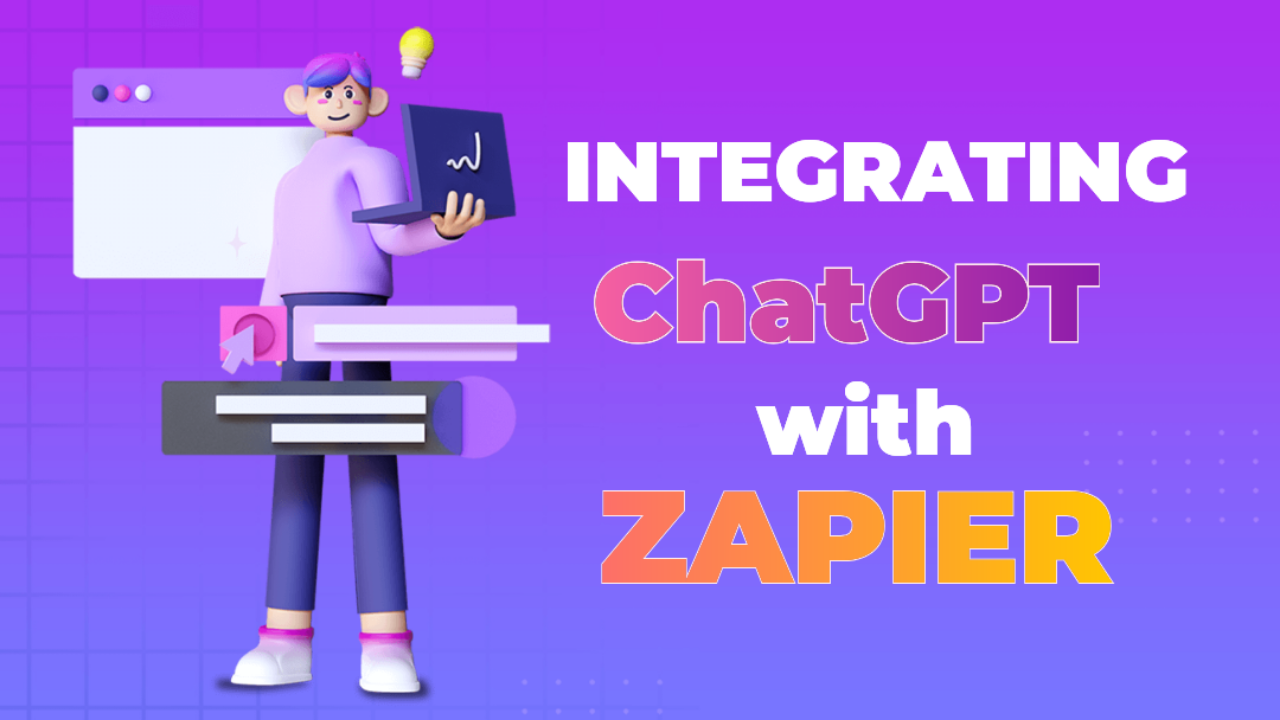Integrating ChatGPT with Zapier
Objective: In this class, we’ll learn how to integrate ChatGPT with Zapier to automate workflows across various apps and services without any coding, helping you save time and boost productivity.
1. Introduction to Zapier
Zapier is an automation tool that connects different apps and automates tasks between them using “Zaps” (automated workflows). Zapier supports over 5,000 apps, making it a powerful tool for automating repetitive tasks.
2. Benefits of Integrating ChatGPT with Zapier
- Automate repetitive tasks: Automatically trigger actions between apps, such as sending emails, creating documents, or updating spreadsheets.
- Seamless cross-app workflows: Connect ChatGPT to multiple apps through Zapier, creating automated processes that span across platforms.
- No coding required: Zapier’s easy-to-use interface allows you to set up integrations without writing any code.
- Enhanced data handling: Use ChatGPT’s AI capabilities to process and analyze data across various apps.
3. How to Integrate ChatGPT with Zapier
Step 1: Sign Up for Zapier
- Go to Zapier’s website and sign up for a free account if you don’t have one.
- You can upgrade to a premium account if you need to access more advanced features or connect more apps.
Step 2: Get an API Key from OpenAI
- Sign up for OpenAI and retrieve your ChatGPT API key. This key will be used in the Zapier workflow to interact with ChatGPT.
Step 3: Create a New Zap
- In Zapier, click the Create Zap button to start setting up your workflow.
- Select a Trigger App. This is the app where your automation will start (e.g., Gmail, Slack, or Google Sheets).
Step 4: Set Up the Action with ChatGPT
- Choose OpenAI (ChatGPT) as the Action App in Zapier.
- Configure the Action settings. For example:
- In Gmail, you could set up a trigger that pulls the content of an email.
- In ChatGPT, you can set the action to summarize the email or draft a response.
Step 5: Test and Finalize the Zap
- Once your trigger and action are configured, test the Zap to ensure it works correctly.
- Zapier will run the workflow automatically whenever the trigger conditions are met.
4. Practical Examples
Example 1: Automating Email Summaries with Gmail
- Trigger: When a new email is received in Gmail.
- Action: ChatGPT summarizes the email content.
- Result: You receive a simplified summary of long emails, saving time on reading.
Example 2: Creating Blog Drafts from New Google Docs
- Trigger: When a new Google Docs file is created with a blog outline.
- Action: ChatGPT generates a blog draft based on the outline.
- Result: You automatically receive a blog draft in a new document, reducing time spent on writing.
Example 3: Scheduling Social Media Posts with Google Sheets and Buffer
- Trigger: When a new row is added to a Google Sheets file with social media post content.
- Action: ChatGPT analyzes the content, and Zapier automatically schedules the post on Buffer.
- Result: Social media posts are scheduled automatically based on your predefined content in Sheets.
5. How Integration Improves Productivity
- Task Automation Across Platforms: By connecting ChatGPT with Zapier, you can automate tasks across multiple apps, such as handling customer queries, generating content, or analyzing data.
- Smart Automation: ChatGPT can analyze and understand text before taking action, making workflows smarter. For instance, it can summarize, classify, or rewrite content before sending it to another app.
- Multi-App Workflows: With Zapier’s support for thousands of apps, you can integrate ChatGPT into workflows that touch multiple apps, such as integrating CRM systems, project management tools, and communication apps.
6. Real-Life Use Cases
Use Case 1: Automating Customer Support with Helpdesk Tools
A support team uses Zendesk and often receives long customer support requests. With ChatGPT integrated via Zapier, you can automate the process of summarizing tickets, helping the team quickly prioritize cases without needing to read each one in full.
Use Case 2: Content Marketing Automation
A content marketing team could set up a Zap to generate content ideas or outlines for blog posts. For instance, new keywords in a Google Sheets file can trigger ChatGPT to generate blog ideas or outlines based on those keywords.
Use Case 3: Automating Data Processing in Google Sheets
An analyst could automate complex calculations in Google Sheets. Whenever new data is entered, ChatGPT can process the data (e.g., summarizing trends or insights) and return it to the user, significantly speeding up data analysis tasks.
7. Summary
Integrating ChatGPT with Zapier opens up endless possibilities for automating workflows across multiple apps without writing any code. This integration empowers you to automate repetitive tasks, streamline processes, and use ChatGPT’s AI capabilities to make workflows more intelligent and efficient.
Assignment
- Create a Zap in Zapier that integrates ChatGPT with another app (e.g., Gmail, Google Sheets, or Slack).
- Test the Zap and observe how ChatGPT can automate tasks like generating content, summarizing data, or processing emails.





















